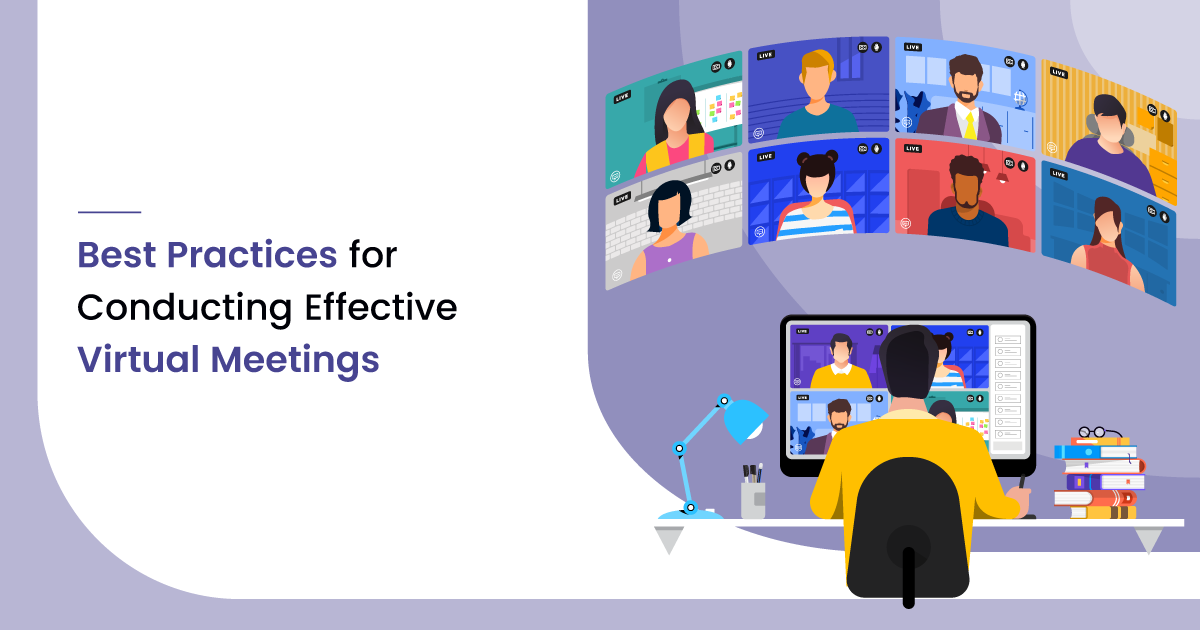With the continual rise of COVID-19 and the effects it has on everyday business processes, companies and their employees are looking to their leadership and board of directors for guidance. For example, our co-founder and CEO, Paroon Chadha, has used blog posts and hosted “Ask Me Anything” chats to keep customers and employees feel calm, confident, and informed.
These practices are equally applicable to the boardroom. After all, the strength of the board’s support will provide confidence to the CEO and all other stakeholders.
Get Free Demo: Best Video Conferencing Software in 2020
Even before the crisis, web conferencing apps and board management software were already making it less of a challenge to have at least one board member attend meetings remotely. Since the coronavirus outbreak, social distancing rules have almost completely eliminated physical, in-person meetings. Knowing tips and tricks when working with remote boards and committee members can help lessen the stress of being physically apart.
So, how do you maximize the boardroom experience and work together over such extreme distances? Continue reading for five best practices on effective virtual meetings.
5 Tips for Effective Virtual Meetings
1. Find the Right Virtual Meeting Tool
First, it is essential to make sure you have the right technology to effectively run a remote virtual meeting. In their rush to implement virtual meetings, many organizations thought that meant a web conferencing app (e.g., Zoom, GoToMeeting, WebEx, etc.) and that was it. These organizations quickly discovered that Zoom does not provide all the tools needed for effective remote meetings and productive collaboration.
Downloading and installing Zoom – and other web conferencing apps like GoToMeeting and WebEx – is a necessary, critical step but only the first to host successful virtual meetings. For an added benefit, look for a board management software that natively integrates with Zoom to provide your board with a more seamless experience.
2. Host Actionable Meetings with Compliant & Agile Decision-Making Tools
Hosting an actionable meeting means enabling directors with tools designed to help accelerate decision-making. At a minimum, you need additional apps that help keep attendees engaged and encourage participation: a document sharing and storage app, a messaging app, a collaboration app, a survey and polling app, and perhaps an electronic signature app. Other tools should be made available for directors to take notes inside the boardroom, make annotations, and highlight key points.
Yes, it is possible to cobble together all of these tools to enable a virtual meeting. Assembling a patchwork of multiple software apps and getting them to “talk” with each other, however, is time-consuming and expensive. Board management software solves this problem by providing a secure platform that integrates all of the required functionality together. Attendees can participate from any place, at any time, on any device.
3. Lean on Your Committees
Using and delegating work to smaller workgroups or committees can be a practical way to organize and manage a board’s overall workload. This is especially true with larger boards and institutions. These focused groups can be more agile and more efficient than the full board. After all, a typical board only meets once every few months for a few days at a time. Many directors serve on multiple boards, and board management software allows them to do board work across organizations with a single login.
Organizations are also finding committees useful for opening new revenue streams. For instance, loan committees are using board management software to streamline the loan process. This has led to a more efficient loan process, which has translated into faster loan approvals and more revenue.
4. Keep the Board Engaged
Even prior to COVID-19, a common misconception existed that a board member’s job instantly ended as soon as they left the boardroom. The reality has consistently proven otherwise: when boards left the boardroom, they did so with extensive commitments and to-do’s. This made it difficult to keep the conversation and momentum going in between meetings, and board engagement suffered.
Board management software makes it easy for board chairs and executive leadership to keep their directors engaged. Task managers and survey tools, for instance, can sustain momentum and increase engagement. Voting and e-signature tools enable directors to take action in between meetings, and secure messaging apps provide board members with a way of collaborating together.
Only a truly engaged board member will become your business’s best strategist and supporter. An engaged board is a forward-thinking board.
Not sure what features to look for in software? This board management buyer’s guide should help!
5. Keep Information and Materials Accessible and Current
Let’s face it: directors have more information than ever to read and digest. This makes it vital to have a centralized location for all confidential meeting materials available at all times and to be able to search those documents at a moment’s notice.
Additionally, many important documents and board materials change at the last minute. Materials then need to be reprinted and redistributed, wasting precious time and administrative energy. Outdated documents and board books can be difficult to work with, so versioning them is important or use board management software that automatically updates them for you.
Get the Virtual Meeting Toolkit
After spending nearly two decades working alongside executive leaders, admins, and board directors, we’ve put together the definitive guide to conducting effective and productive virtual meetings.
Get Your FREE Copy Today
Need Any Technology Assistance? Call Pursho @ 0731-6725516







